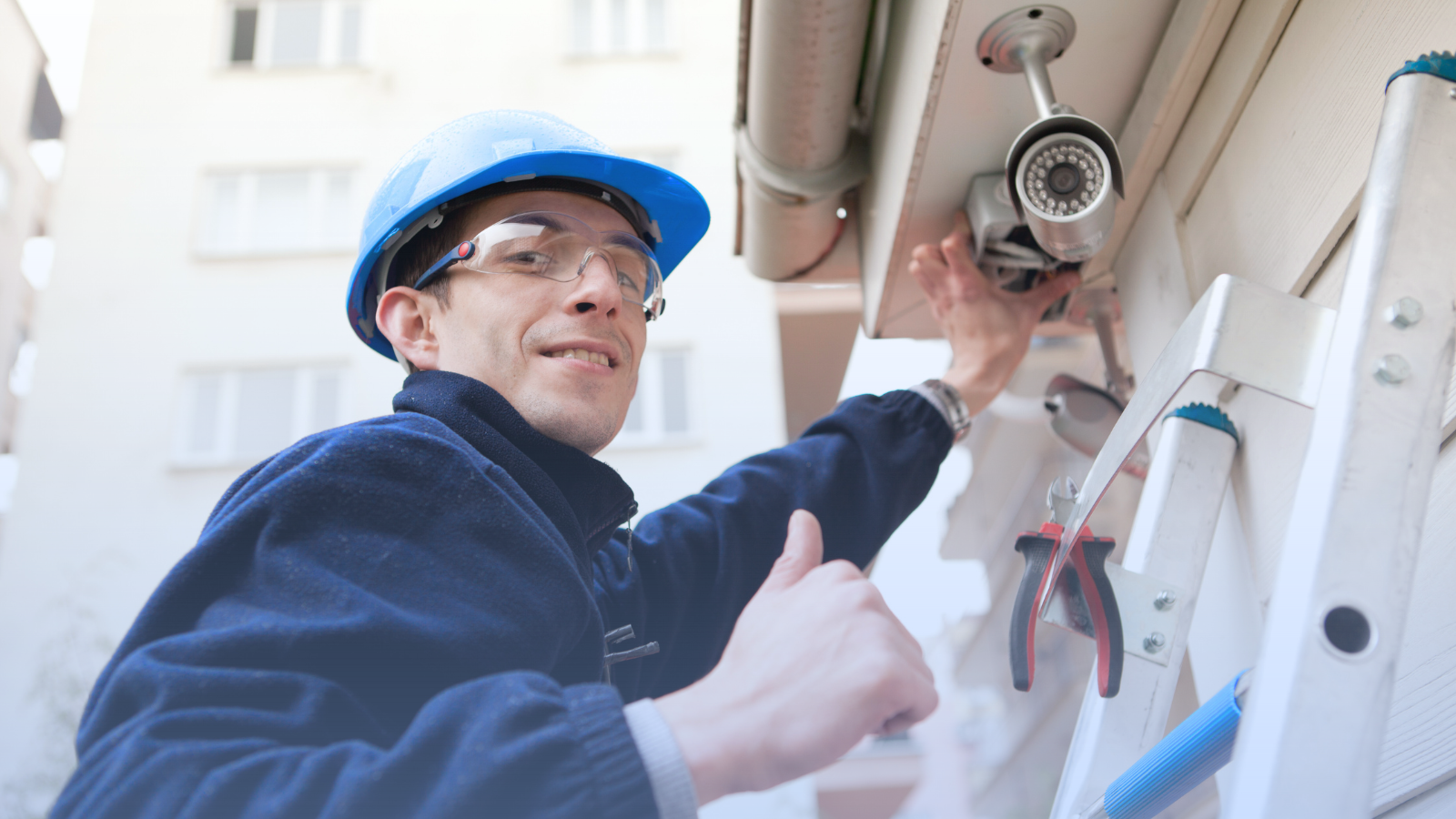Utility companies are under increasing pressure to secure some of the country’s most critical and most vulnerable infrastructure. Power grids, water systems, and treatment plants span vast, often remote areas, making them prime targets for physical threats ranging from theft and vandalism to insider attacks and coordinated intrusions.
According to the U.S. Department of Energy, the energy sector reports over 100 physical security incidents each year, highlighting the ongoing challenges of protecting critical infrastructure.
CISA has published extensive guidance to help operators mitigate these risks. The harder part is applying that guidance across aging infrastructure, thinly staffed teams, and fragmented systems.
This guide breaks down what utility security teams need to know and how to turn national strategy into day-to-day action.
Understanding CISA’s role and relevance
CISA plays a central role in helping utility companies manage risk across both cyber and physical infrastructure. For the Energy Sector and Water and Wastewater Systems Sector, CISA serves as a key resource, providing:
- Threat Intelligence: Real-time updates on emerging risks and attack methods.
- Vulnerability Assessments: Tools to identify and evaluate security gaps.
- Best Practices: Actionable guidance for improving physical security.
- Information Sharing: Collaborative channels between government and industry.
- Training & Exercises: Resources to strengthen readiness and response.
Actively engaging with CISA allows utility companies to move beyond reactive responses and take a more strategic, proactive approach to physical security. When used effectively, these resources can help teams strengthen day-to-day operations and build long-term resilience.
Key CISA resources for physical security teams
Utility security teams face the immense challenge of safeguarding vast, high-risk environments with limited resources and no room for error. Fortunately, the Cybersecurity and Infrastructure Security Agency (CISA) offers a robust suite of resources to help these teams enhance their physical security posture.
For strategic guidance and timely alerts
- CISA Insights provides high-level recommendations and timely alerts on evolving threats, enabling security leaders to make quick, informed decisions.
- Advisories and Bulletins complement these insights with more technical guidance on specific vulnerabilities, offering mitigation strategies tailored for critical infrastructure sectors.
For building and strengthening security programs
- Critical Infrastructure Security Best Practices offers clear, actionable frameworks across various security domains for teams building or reassessing their physical security programs.
- The Infrastructure Resilience Planning Framework supports these best practices by helping organizations assess risk and develop robust, adaptable security plans.
For On-the-ground support and expertise
- Protective Security Advisors (PSAs) are CISA personnel located regionally who provide on-site assessments, training, and guidance directly to utility security teams. Their recommendations are based on both national intelligence and local operational realities.
These CISA resources collectively form a comprehensive support system, empowering utility providers to remain prepared, informed, and aligned with national security priorities.
Translating that guidance into action, however, requires a clear plan. Understanding where to focus, what to prioritize, and how to scale efforts across diverse sites is where the real work begins.
Actionable steps for utility companies
Utility security teams face constant pressure to protect widespread infrastructure, manage limited resources, and meet regulatory requirements all while responding to emerging threats in real-time.
Here’s how utility companies can put CISA’s information to work and strengthen their physical security posture on the ground:
Step 1: Establish a dedicated CISA information pipeline
Security teams can’t act on what they don’t see. CISA delivers high-value updates, insights, and best practices but they only make an impact when the right people receive them, at the right time, and know what to do next.
That’s why every utility should build a simple, reliable process to bring CISA information into daily operations.
- Start by assigning a point of contact (POC). Choose someone on your security or operations team to monitor CISA updates, share key takeaways internally, and serve as the main liaison for federal guidance.
- Subscribe to CISA alerts and bulletins. These provide real-time intelligence on threats and clear mitigation steps. Make sure your frontline teams receive them directly, not just leadership.
- Engage with your sector’s ISAC. Whether it’s E-ISAC for electricity or WaterISAC for water systems, these peer networks offer curated threat intel and real-world insights from others in your industry.
- Review updates regularly. Fold CISA guidance into existing risk reviews, tabletop exercises, or weekly check-ins. Don’t let it sit unread put it to work.
When threat intelligence flows easily through your team, decisions happen faster, gaps close sooner, and your security program stays aligned with national priorities.
Step 2: Conduct CISA-informed risk and gap analysis
Knowing where you’re vulnerable is the first step to getting ahead of the next threat. CISA provides a range of tools and threat intelligence to help utility teams assess real-world risk, uncover blind spots, and prioritize what to fix first.
This step is about making those insights practical and turning guidance into focused action.
Map CISA threats to your critical assets
Start by mapping CISA-identified threats to your most critical infrastructure.
As new advisories are released, assess how they could impact key assets like substations, control centers, treatment facilities, and pipelines focusing on the systems that keep your services running.
With this information in hand, use physical security assessment tools available through Protective Security Advisors (PSAs) or your sector’s ISAC. These frameworks help identify vulnerabilities both obvious and overlooked by bringing structure and objectivity to the evaluation process.
Next, conduct a gap analysis. Compare your current security posture—fences, cameras, access controls, alarms against CISA’s best practices. Identify what’s missing, where policies fall short, and which gaps pose the highest risk. Prioritize fixes based on impact, not convenience.
When these reviews become routine, you’re not just meeting requirements you’re building a security posture that evolves with the threat landscape.
Step 3: Implement and enhance physical security measures
Once vulnerabilities are identified, the next step is action.
CISA recommends a layered approach to physical security a combination of people, policies, and technology that creates multiple, overlapping lines of defense. For utility providers, this means focusing on critical infrastructure while building systems that are both resilient and adaptable.
Start with access control
Access control is the foundation of any secure site. It’s not just about keeping the wrong people out, it’s about ensuring every access point is monitored, managed, and auditable. Key measures include:
- Multi-factor authentication at high-risk entry points.
- Role-based badging systems.
- Regular access reviews and immediate revocation of unused credentials.
- Strict visitor management policies, including escorts and time-limited access.
Strengthen the perimeter
Your perimeter is your first visible line of defense. Strong physical barriers act as both deterrents and delay mechanisms. Focus on:
- Durable fencing and secure gates.
- Motion sensors, fiber-optic intrusion detection, or ground radar systems.
- Routine perimeter inspections and maintenance.
Improve visibility and deterrence
Visibility supports both prevention and response. Well-lit environments and clear boundaries help eliminate blind spots and improve camera coverage. Where possible, implement standoff distances to reduce exposure to vehicle-based threats.
Train and vet personnel
Technology can’t compensate for human error—or malicious intent. Every employee, contractor, or third-party with access should be thoroughly vetted. Insider threat programs and ongoing training are essential. Reinforce:
- Background checks for sensitive roles
- Challenge protocols to question unusual activity
- Security awareness programs that promote accountability
These plans should align with CISA guidance, include coordination with local law enforcement and emergency services, and be updated regularly based on real-world drills and lessons learned.
Step 4: Conduct regular training and awareness programs
People are one of the most critical layers in any physical security strategy. Building a culture of vigilance starts with consistent education and ends with an organization-wide commitment to readiness.
Security teams should receive focused instruction tailored to the threats specific to utility environments. This includes:
- Threat identification and behavioral indicators.
- Incident response procedures and escalation protocols.
- Proper use of monitoring systems, communications tools, and access control technology.
To keep training relevant, organizations should incorporate lessons learned from recent incidents and CISA advisories into each cycle. This keeps teams aligned with the evolving threat landscape and connected to real-world risks.
Beyond individual instruction, routine tabletop exercises are essential for testing plans under simulated stress. These exercises, based on realistic scenarios like physical intrusions or equipment sabotage, help expose weaknesses in coordination, surface overlooked gaps, and improve interdepartmental and external collaboration.
Step 5: Foster collaboration and information sharing
Effective physical security doesn’t happen in isolation. Threats to utility infrastructure are often part of broader patterns and staying ahead of them requires constant coordination with peers, industry groups, and government partners.
CISA emphasizes the importance of public–private collaboration and sector-wide information sharing. Utility companies that actively engage with these networks are better equipped to respond to threats and contribute to the security of the broader energy and utilities sector.
Engage with CISA PSAs
- Your Protective Security Advisor (PSA) is a direct connection to CISA’s physical security expertise.
- Contact your regional PSA for site visits, vulnerability assessments, and tailored recommendations
- Use PSAs as a resource to stay aligned with evolving federal guidance and response priorities.
Security challenges in the utility sector are rarely isolated. Participating in industry forums, CISA-led workshops, and sector-specific webinars offers valuable opportunities to exchange insights, learn from peers, and stay ahead of emerging threats.
These spaces support collaboration and knowledge-sharing essential for strengthening both organizational and sector-wide resilience.
Equally important is the practice of reporting. Incidents, suspicious activity, and near misses should be shared with CISA and the appropriate Information Sharing and Analysis Center (ISAC), such as E-ISAC or WaterISAC. These reports, often anonymized, help shape better threat assessments and more targeted guidance for the entire industry.
Staying connected strengthens everyone’s defenses.
Step 6: Implement continuous improvement
Physical security isn’t a set-it-and-forget-it effort. Threats evolve, technology advances, and yesterday’s solutions may no longer meet today’s challenges.
Building true resilience means treating physical security as a living program one that adapts over time and improves through regular review, testing, and refinement.
CISA encourages utility providers to embed continuous improvement into daily operations, making security a core part of organizational culture rather than a periodic check-the-box exercise.
Conduct regular reviews
Routine evaluations help ensure your security posture remains aligned with current risks and operational realities.
- Review physical security policies, procedures, and infrastructure annually or bi-annually
- Adjust strategies based on updated CISA guidance, new threat intelligence, and insights from recent incidents or drills
Update Technology strategically
Technology moves quickly and outdated systems can become blind spots. Keeping up with innovation can help close gaps, improve efficiency, and reduce manual workload.
- Monitor advancements in surveillance, access control, intrusion detection, and analytics
- Prioritize upgrades that align with your risk profile, operational environment, and long-term goals
Audit and test continuously
Verification is key to knowing your systems work as intended—not just in theory, but in real-world conditions.
- Conduct regular audits of security controls and asset functionality
- Use penetration testing or red teaming exercises to expose vulnerabilities before attackers do
Continuous improvement doesn’t just keep systems current it builds confidence, strengthens team performance, and ensures your security program evolves alongside the threats it’s designed to counter.
Managing utilities physical security with confidence
Strengthening physical security is not a one-time initiative, it’s an ongoing process that demands consistency, adaptability, and a clear strategy for managing risk over time.
CISA offers the guidance and resources utility providers need to stay ahead of emerging threats. When integrated into daily operations, this insight helps teams improve visibility, close security gaps, and maintain the continuity of critical services.
SiteOwl is purpose-built to support the full physical security lifecycle. Designed for the unique demands of the industry, it unifies teams, systems, and workflows in a single operational environment, giving security leaders the visibility, control, and agility to manage risk at every stage.
From planning and deployment to maintenance and audits, SiteOwl helps utility providers stay ahead of threats, streamline coordination, and strengthen long-term resilience across their infrastructure.
With the right tools and the right approach, utility providers can strengthen their defenses, respond faster, and build more resilient infrastructure today and for the long term.
Ready to modernize your physical security program? SiteOwl gives you the tools to see it all and take control.

Su Subburaj
Su is SiteOwl's CMO and leads all marketing and communications. Su has extensive strategy and management consulting experience and previously consulted for 3Sixty Integrated where she gained an in-depth understanding of digital transformation challenges in the physical security industry. When not working on strategies to expand SiteOwl's footprint, Su enjoys bad karaoke, weightlifting and traveling.




